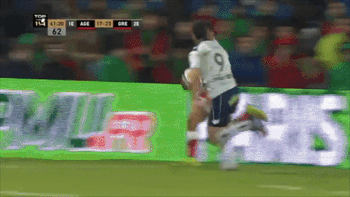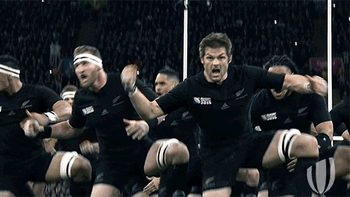Breaking down the 2025 Women’s Rugby World Cup

🏉 The need-to-know
📈 More is more for the 2025 Women’s Rugby World Cup: We’re talking more teams (16, up from the 12 that competed three years ago in New Zealand), more professional players, and more ticket sales. In fact, over 300K tickets have been sold, more than doubling the previous edition’s total, making this the largest celebration of women’s rugby in the sport’s history.
- Whether it was the explosion of Sevens at the Paris Olympics, women’s pro rugby debuting in the U.S., or the participation surge at the grassroots level, women’s rugby is a movement and the moment.
👏 Unlike the Sevens played at the Olympics, the Women’s Rugby World Cup is traditional 15s style. There are two main differences between the two: 15s is a much longer game (40 minutes vs. 14), and there are 15 players on the pitch, making the pace of play slower and the strategy much more deliberate with so many extra bodies taking up space.
🏆 World No. 3 New Zealand enters the quadrennial tourney as the two-time defending champs, par for the course for the Black Ferns, who’ve won six of the nine tournament titles. Pure dominance.
- Only two other countries have hoisted the World Cup in its history: The U.S., who beat England at the debut event in 1991, and the Red Roses themselves, who won in both 1994 and 2014. Will a new squad join the exclusive winner’s circle this year?
⚙️ The tournament breakdown
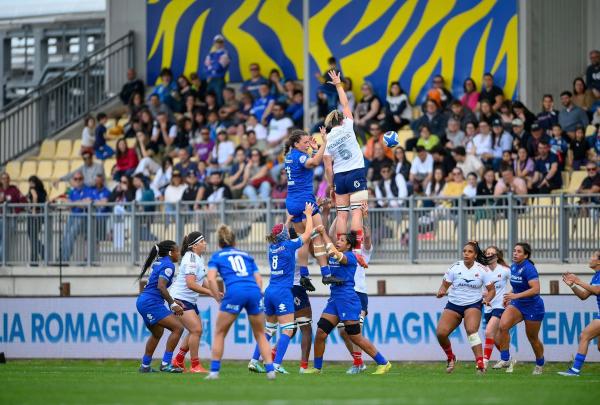
🟢 As mentioned, the fun begins today and will run through the championship game on Saturday, September 27th. Eight venues across England will be used: The largest, Twickenham Stadium, boasts a whopping 82K capacity, a crowd that will shatter the sport’s all-time attendance record.
📋 As for the tourney itself, the 16 teams were split into four pools based on their international rankings, with the top four seeds — No. 1 England (Pool A), No. 2 Canada (Pool B), No. 3 New Zealand (Pool C), and No. 4 France (Pool D) — headlining each of the groups.
- First, teams play three round-robin games against the other squads in their pool. From there, the top two teams in each group advance to the knockout rounds, beginning with the quarter-finals on September 13th.
‼️The Red Roses, Canucks, and Black Ferns should advance to the knockout stage with relative ease, but expect chaos to ensue after that, especially in Pools A and D.
- Pool A will be a three-horse race for the second qualifying spot, as No. 6 Australia, the U.S., and No. 15 Samoa all have a realistic shot at advancing.
- Meanwhile, No. 7 Italy has the best chance to usurp Pool D’s top spot from the French. Le Azzurre reached the quarter-finals at the last World Cup before eventually losing to Les Bleues. We’re more than ready for this spicy group-stage rematch.
💪 The top teams
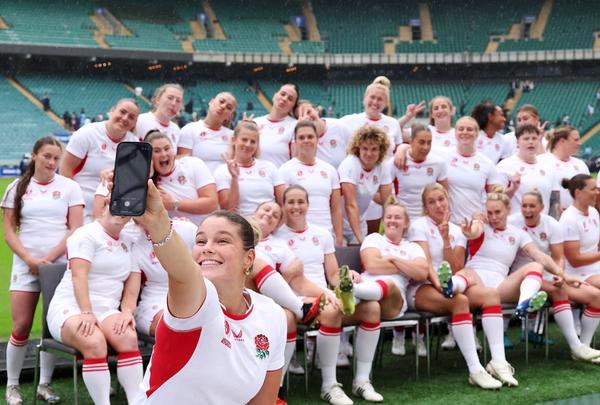
Who has the best chance of hoisting the trophy at tournament’s end? We’re so glad you asked. We love an underdog story, but three of the top four seeds have looked virtually unstoppable in the lead-up to the World Cup. Locked in, indeed.
🏴 No. 1 England: The Red Roses top the rankings for a reason. They haven’t lost a match since 2022, added a seventh consecutive Six Nations title to their trophy case earlier this year, and haven’t dropped a World Cup group stage game since 2014.
- The kicker? They looked equally dominant in the last two World Cups but lost to the Black Ferns in the final…twice. Ouch.
🇨🇦 No. 2 Canada: Despite being ranked No. 2, the hard-nosed Canucks are still seen as the tournament’s dark horse. They’re always in the mix but haven’t managed to get over the hump, reaching just one final in their nine World Cup appearances. Known for their grit, flying under the radar is still flying, especially if they can put it all together when it matters most.
🇳🇿 No. 3 New Zealand: The perennial powerhouse Black Ferns haven’t been their best selves in recent years, losing an unconscionable six of 10 matches during a difficult stretch two years ago — but their championship pedigree speaks for itself. And peaking at the right time is part of the Black Ferns’ DNA, especially given the unexpected return of the legendary Portia Woodman-Wickliffe.
🇫🇷 No. 4 France: Cue Taylor because Les Bleues are powered by revenge. They came oh so close to snapping England’s years-long winning streak, losing by one to the Red Roses earlier this year. Not to mention, they missed a would-be game-winning kick against New Zealand, causing them to miss the championship final in 2022. A double dose of vengeance? Count us in.
💪 Players to watch
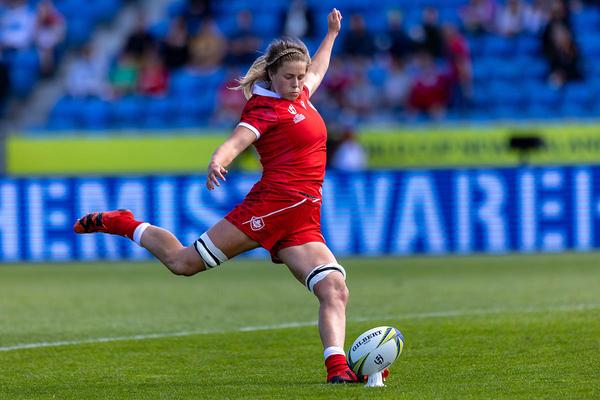
🇨🇦 Sophie de Goede, No. 8, Canada: It’s safe to say de Goede was born for this — and she’s more than familiar with rugby history, keeping her ticket to the 2014 World Cup final (when Canada lost 21–9 to England) on her dresser. Despite just returning from a torn ACL this year, the Canadian captain is more than ready to lead the Canucks as one of the game’s most complete players.
🇳🇿 Jorja Miller, Flanker, New Zealand: One of four Olympic gold medal–winning Black Ferns who made the switch from Sevens to 15s for the World Cup, Miller is already leaving her mark on one of the most storied programs in rugby history. The 21-year-old is smart, fast, and talented, a trifecta that’s kept co-captain Kennedy Tukuafu out of the starting lineup at times.
🇦🇺 Caitlyn Halse, Fullback, Australia: Only eighteen-years-old, Halse is ready to lead the Wallaroos as the youngest debutant in Australian women’s rugby history. What’s more, fullbacks are often the last line of defense, making Halse integral to Australia’s on-pitch success. No pressure, no diamonds.
🇪🇸 Clàudia Peña, Center, Spain: Another youngster ready to explode on the international stage, this 20-year-old is one of the most exciting prospects to come out of Spain in recent memory after taking Premiership Women’s Rugby (PWR) by storm this season. It’s Las Leonas first trip to the World Cup in eight years, and Peña could be key to a strong showing.
🇺🇸 Alev Kelter, Center, U.S.: Kelter’s a Jill-of-all-trades — she played collegiate hockey and soccer, enjoys glassblowing and sculpting, and was the first American woman to score a try at the Olympics. Now she’s found a forever home on the 15s pitch, where she’ll create space for the American backline. What, like it’s hard?
Enjoying this article? Want more?

Sign up for The GIST and receive the latest sports news straight to your inbox three times a week.

